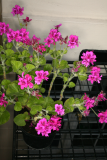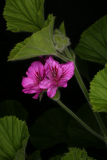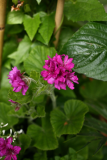Additional notes (click to expand)
Medicinal
Traditionally this pelargonium was used medicinally to cure colic, kidney ailments, diarrhoea, coughs and fevers. The leaves were used as a poultice for bruises, stings and abscesses.
PlantzAfrica.com. South African National Biodiversity Institute, South Africa. http://www.plantzafrica.com/plantnop/pelargoniumcucull.htm
link
P. cucullatum was first recorded in 1687 as an emollient and a treatment for colic and nephritis (source: Scott, G. & Hewett, M.L., 2008, Pioneers in ethnopharmacology: The Dutch East India Company (VOC) at the Cape from 1650 to 1800, J. Ethnopharmacol. 115:339-360.
Van Wyk, B.E., Van Oudtshoorn, B Gericke, N. (2000). Medicinal Plants of South Africa, Briza Publications. 2nd ed p.216
Geographical distribution
- Africa, Southern Africa, Cape Provinces
Pelargonium cucullatum ( L. ) L'Her.
Family: GERANIACEAEGenus: Pelargonium
Species: cucullatum ( L. ) L'Her.
Common names: Hooded- leaf Pelargonium; Tree Pelargonium; Wilde Malva (Afrikans)
Distribution summary: South Africa (Cape Province)
Habit: Shrub
Hardiness: H2 - Tender; cool or frost-free greenhouse
Habitat: Frequently on sandy soils
Garden status: Currently grown
Garden location: Plants in pots (POT), Plants in pots (POT), Southern Hemisphere Wolfson bed (N)
Reason for growing: Medicinal
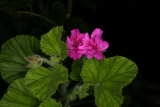
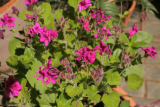
.JPG)
.JPG)
.JPG)
